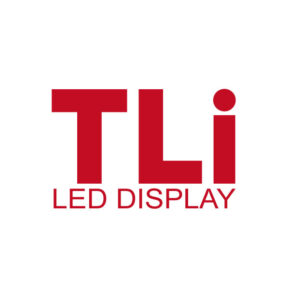LED display driver products mainly include line scan driver chip and column driver chip, and its application areas are mainly outdoor LED advertising screens, semi-outdoor door head screens, indoor LED displays, LED bus stop display and various LED advertising billboards. From the perspective of display type, it covers LED monochrome display, LED two-color display and LED full-color display.
 ChipOne Driver IC solutions
ChipOne Driver IC solutions
In the work of the LED full-color display, the role of the driver IC is to receive display data that conforms to the protocol (from information sources such as receiving cards or video processors), internally produce PWM and current time changes, output and brightness gray scale refresh and other related PWM currents to light up the LED. The peripheral IC composed of the driver IC and the logic IC and the MOS switch jointly acts on the display function of the LED display and determines the display effect it presents.
LED driver chips can be divided into two types: general-purpose chips and special-purpose chips.
The so-called general-purpose chip, the chip itself is not specifically designed for LEDs, but some logic chips with led display part of the logic function (such as string 2 and shift registers).
The dedicated chip refers to the driver chip designed specifically for LED display according to the LED light emitting characteristics. LEDs are current characteristic devices, that is, under the premise of saturation conduction, their brightness changes with the change of current, rather than by adjusting the voltage across them. Therefore, one of the biggest features of the dedicated chip is to provide a constant current source. The constant current source can ensure the stable driving of the LED and eliminate the flickering phenomenon of the LED, which is the premise of the LED display display of high-quality pictures. Some special chips also add special functions for different industry requirements, such as LED error detection, current gain control and current correction.
In the 90s of the last century, led display applications were mainly single and double colors, using constant voltage driver ICs. In 1997, China appeared the first LED display special drive control chip 9701, from 16 levels of gray to 8192 levels of gray, to achieve the video WYSIWYG is what you get. Subsequently, for the LED luminous characteristics, the constant current driver became the first choice for the full-color LED display driver, while the 16-channel driver with a higher integration replaced the 8-channel drive. At the end of the 1990s, Companies such as Toshiba in Japan and Allegro in the United States and Ti in the United States successively launched 16-channel LED constant current driver chips, and at the beginning of the 21st century, the driver chips of Chinese Taiwanese enterprises were also mass-produced and used. Nowadays, in order to solve the problem of PCB wiring of small-pitch LED displays, some driver IC manufacturers have introduced highly integrated 48-channel LED constant current driver chips.
In the performance indicators of led display, the refresh rate and gray level and image expression are one of the most important indicators. This requires high consistency of current between led display driver IC channels, high-speed communication interface rate, and constant current response speed. In the past, the refresh rate, gray scale and utilization rate were a trade-off relationship, and to ensure that one or two of the indicators could be superior, it was necessary to appropriately sacrifice the remaining two indicators. To this end, many LED displays in practical applications are difficult to have the best of both worlds, either not refreshed enough, high-speed camera equipment is prone to black lines under shooting, or gray scale is not enough, color brightness is inconsistent. With the advancement of the technology of driving IC manufacturers, there have been breakthroughs in the three high problems, and these problems have been solved.
In the application of LED full-color display, in order to ensure the comfort of the user’s eyes for a long time, low brightness and high ash have become a particularly important criterion for testing the performance of the drive IC.
Energy saving: As a green energy, energy saving is the eternal pursuit of LED display, and it is also an important criterion for considering the performance of the drive IC. The energy saving of the driver IC mainly includes two aspects, one is to effectively reduce the constant current inflection point voltage, thereby reducing the traditional 5V power supply to less than 3.8V operation, and the other is to reduce the operating voltage and operating current of the driver IC by optimizing the IC algorithm and design. At present, some manufacturers have launched a constant current driver IC with a low torque voltage of 0.2V and an increase in LED utilization rate of more than 15%, using a supply voltage 16% lower than that of conventional products to reduce heat generation, which greatly improves the energy efficiency of led displays.
Integration: With the rapid decline of the pixel pitch of the LED display, the packaged devices to be mounted per unit area increase in geometric multiples, greatly increasing the component density of the module driving surface. Taking the P1.9 small-pitch LED as an example, the 160*90 module with 15 sweep requires 180 constant current drive ICs, 45 row tubes, and 2 138s. With so many devices, the wiring space available to the PCB becomes extremely crowded, making circuit design more difficult. At the same time, the arrangement of such crowded components can easily cause problems such as poor soldering, and also reduce the reliability of the module. The less use of the driver IC, the larger wiring area of the PCB, and the demand from the application side force the driver IC to embark on a highly integrated technical route.
At present, the industry’s mainstream driver IC suppliers have successively launched a highly integrated 48-channel LED constant current driver IC, integrating large-scale peripheral circuits into the wafer of the drive IC, which can reduce the complexity of the PCB circuit board design at the application side and avoid the problems caused by the design capabilities or design differences of engineers of various manufacturers.
TLI LED selects the IC model that is most suitable for the customer’s project, so that the customer’s LED display can play the best color performance and bring the ultimate visual perception to the audience. Contact us to get the best quote for your LED project.
SHENZHEN TLI LED, specializing in the research, development, production and sales of LED displays, provides customers with diversified LED display solutions based on advanced technology and excellent quality, which are widely used in commercial advertisements, stadiums, conferences and exhibitions, etc. TLI LED, lighting up the world of vision, leading the future!

Jack
Sales Manager
Jack
Hello my friend, This is Jack from TLi LED. What can I do for you today?